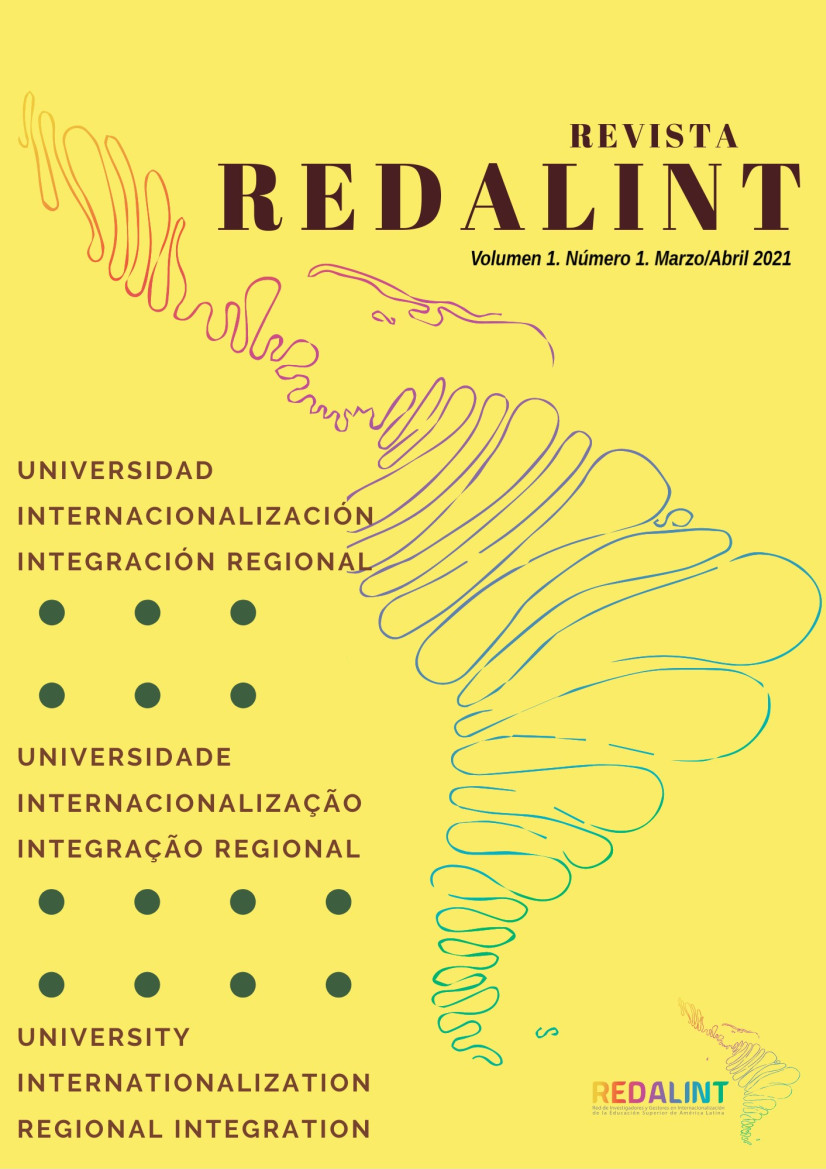Higher Education Internationalization: Concepts, Rationales, and Frameworks
Palabras clave:
internationalization, concepts, rationales, analytical frameworks, strategiesResumen
This article presents different analytical frameworks to understand the key concepts, elements and new developments in internationalization and to gain a more comprehensive understanding of this evolving multifaceted process. The analysis includes a discussion of the meaning of internationalization, key actors, changing rationales and expectations, strategies related to internationalization on campus and abroad, and a look at new developments and innovations. Any examination of internationalization needs to consider the differences among countries and regions of the world recognizing that priorities, rationales, approaches, risks and benefits differ between east and west, north and south, sending and receiving, developed and developing countries. Acknowledging the importance and uniqueness of local context is critical and suggests internationalization must be customized to the local situation and that a ‘one size fits all’ approach to internationalization is not appropriate.Descargas
Citas
Arum, S and van de Water, J. (1992) The need for a Definition of International Education in U.S. Universities . In C. Klasek (ed.), Bridges to the future: Strategies for internationalizing higher education. Carbondale, IL: Association of International Education Administrators. Pp 191-203
British Council and Universities UK. (2016). The Scale and Scope of UK Transnational Education
Deardorff, D. (2006). Identification and assessment of intercultural competence as a student outcome of internationalization in Journal of Studies in International Education, Vol 10 No. 3, pp 241-266.
Dzulkifli, A.R. (2010) Is Internationalization a Western Construct. Presentation at BritishCouncil Going Global 4 Conference, London, UK.
de Wit, H., Hunter, F., Egron-Polak, E., & Howard, L. (Eds). (2015). Internationalisation of higher education: A study for the European Parliament.
Hudzik, J. (2011) Comprehensive Internationalization: From concept to action. NAFSA, Association of International Educators, Washington, DC. USA.
Knight, J. (2004). Internationalization remodeled: Definitions, rationales, and approaches Journal for Studies in International Education, 8(1), 5-31.
Knight, J. (2009) New Developments and Unintended Consequences: Wither Thou Goest, Internationalization? in R. Bhandari and S Laughlin (eds) Higher Education on the Move: New Developments in Global Mobility. Global Education Research Reports. Institute for International Education. New York, New York pp113 -125.
Knight, J. (2010) “Higher Education crossing borders: programs and providers on the move” in D. B Johnstone, M. B. D’Ambrosio and P.J Yakoboski (eds) Higher Education in a Global Society. U.S.A: Edward Elgar Publishing Ltd. P 42-69
Knight, J. (2012) Concepts, Rationales, and Interpretive Frameworks in the Internationalization of Higher Education in D. Deardorff, H. De Wit and J. Heyl (eds) Handbook of International Higher Education. California: Sage Publishers.
Knight, J. (2013) The Changing Landscape of Higher Education Internationalization- for better or worse? In Perspectives: Policy and Practice in Higher Education. Journal of the Association of University Administrators, UK. (17) 2.
Knight, J. (2015) “Meaning, Rationales and Tensions in the Internationalization of Higher Education” in S. McGrath, S and Q. Gu, (eds) 2015 Routledge Handbook on International Education and Development, Routledge, London.
Knight, J. (2019) Knowledge Diplomacy in Action. A discussion paper. The British Council, United Kingdom.
Knight, J. & McNamara, J. (2017). Transnational Education- A Classification Framework and Data Collection Guidelines for International Program and Provider Mobility (IPPM). British Council and DAAD.
Knight, J and Simpson, D. (2020). The Growth of International Joint Universities around the World in D.K. Deardorff, H. de Wit, B. Leask and H. Charles (eds) Handbook of International Education (revised) . Sterling VA: Stylus (in press).
Nilsson, B. (2003). Internationalization at home: Theory and praxis. European Association for International Education Forum, 12.
Nye, J.S. (2004) Soft Power: the Means to Success in World Politics. Public Affairs, New York, New York.
Rumbley, L. (2015). Intelligent internationalisation: a 21st century imperative. University World News. April 17, 2015
OECD (2004). Quality and Recognition in Higher Education. The Cross-border Challenge. Centre for Educational Research and Innovation, OECD. Paris. France
Sperduti, V. (2017) Internationalization as westernization in Higher Education in Comparative and International Education. Vol 9 p 9-18.
Van der Wende, M. (1997). Missing links: The relationship between national policies for internationalisation and those for higher education in general.’ in T. Kalvermark & M. Van der Wende (Eds.), National Policies for the Internationalisation of Higher Education in Europe (pp. 10-31). Stockholm, Sweden: National Agency for Higher Education.
Descargas
Publicado
Cómo citar
Número
Sección
Licencia
Esta revista proporciona un acceso abierto inmediato a su contenido,bajo una licencia
Atribución-NoComercial-SinDerivadas 2.5 Argentina (CC BY-NC/2.5/ar)

Según la cual es posible copiar, comunicar y distribuir públicamente su contenido siempre que se cite a los autores individuales y el nombre de esta publicación, así como la institución editorial.





